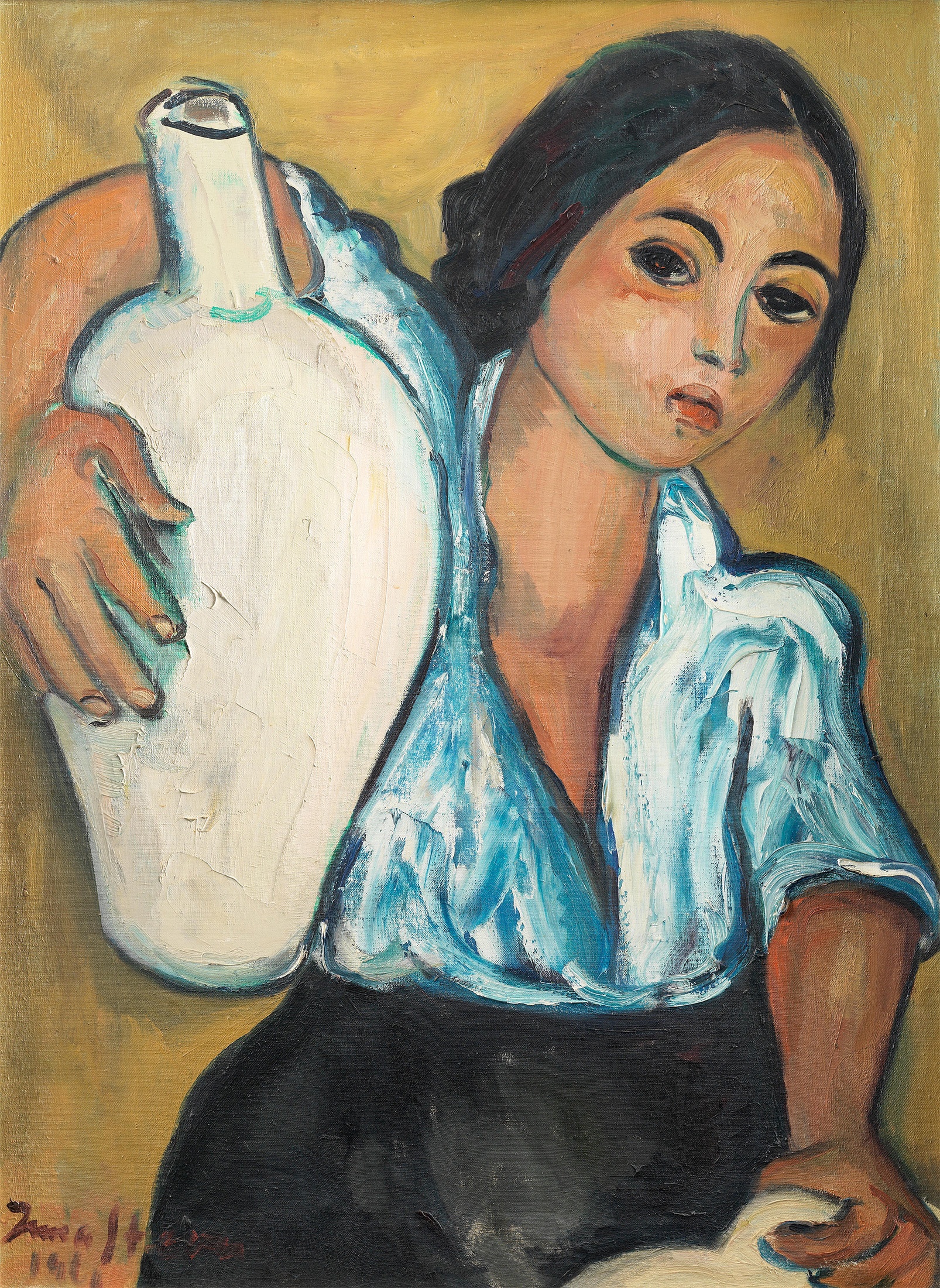Irma Stern
In the early 1960s, Stern’s health deteriorated rapidly, yet she returned to Europe often (her travels through Africa consigned to more youthful years). On visiting Spain in 1960 and again the following year, she found the country’s eastern coast “very African in character. Palms grow – dates even get ripe – the sea is blue and the sun shines hard.” Stern was by then an established artist both in South Africa and abroad, her compositions of that decade characterised by a confidence of gesture, washes of diluted paint, and forms “identified but seldom consolidated,” in the words of art historian Marion Arnold. Recalling the impasto pigment and solidity of the artist’s earlier works, Girl with Jug presents an Alicante local holding a large amphora; the figure and her vessel described in dark outline against a muted ground. The painting, which shares a title with an earlier etching (1951), pairs Stern's preoccupations with portraiture and pottery. That she was a ceramicist in addition to painter is most often cited in her still lifes, her vases and figurines featured among fruits and flowers.
b.1894, Schweizer-Reneke; d.1966, Cape Town
Throughout her life, Irma Stern pursued visions of the exotic. She travelled widely in both Europe and Africa and found in the latter reflections of a timeless idyll. Stern was particularly drawn to the otherness of the people she encountered, to – as she wrote – “the hidden depths of the primitive and childlike yet rich soul of the native.” Unconcerned with the particularity of individuals, her paintings of African figures are not so much portraits but rather ethnographic imaginings (to this end, these sitters are seldom ever named). All this considered, there remains a compelling complexity to her paintings. An artist seduced by colour and rhythm, she in turn seduces the viewer. There is a material richness to Stern’s canvas, a sensual pleasure to her impasto paint. While her words more often revealed colonial sentiments and a profound lack of insight into the lives of others, in paint she was redeemed. Stern can perhaps be forgiven for being of her time and, like so many modernists, excused her primitivism. Beauty, above all, was what Stern sought to express, and the lasting influence of her paintings is a testament to her aesthetic achievements. She remains a commanding presence in the South African art world, in death as she was in life.
